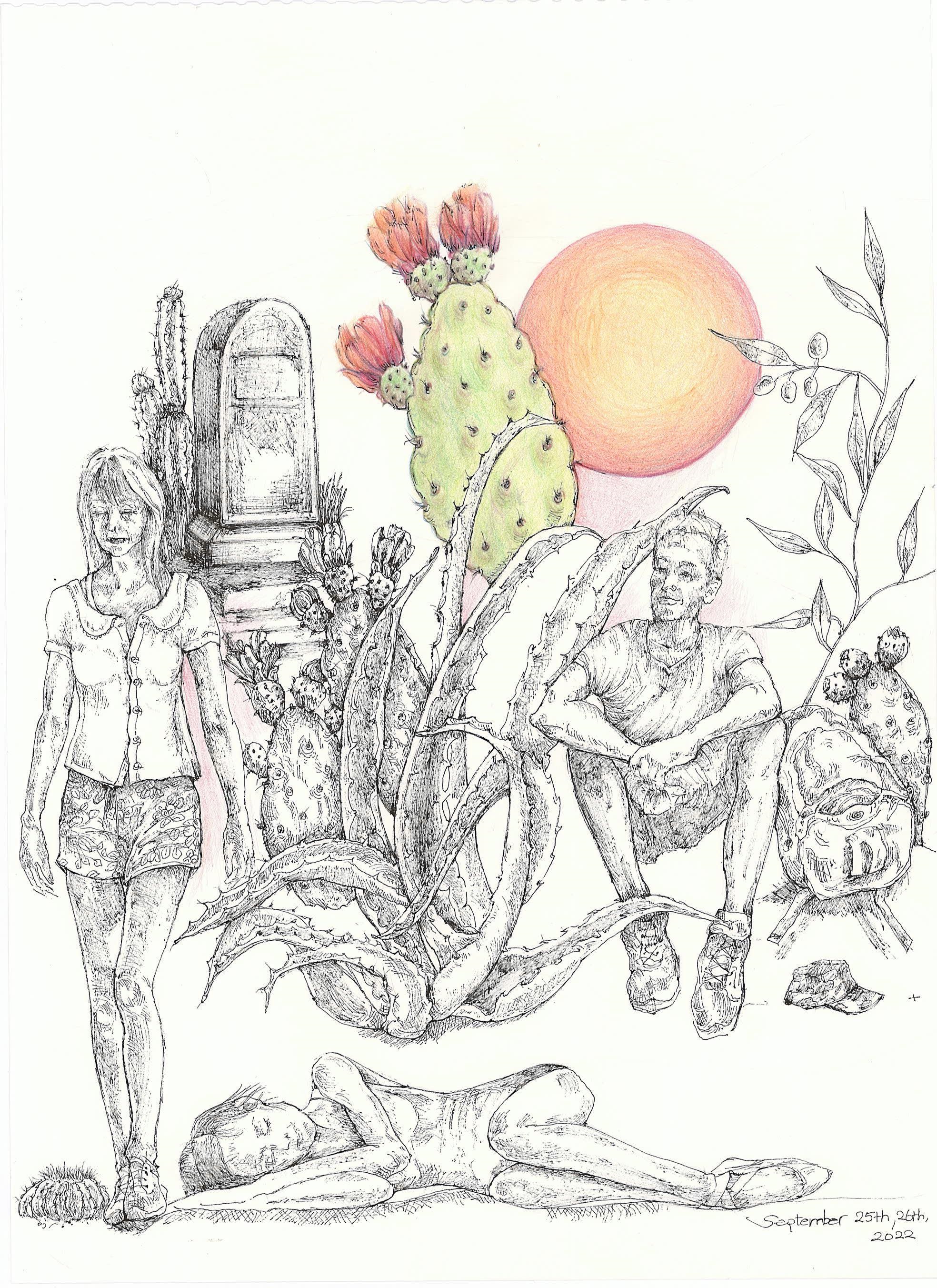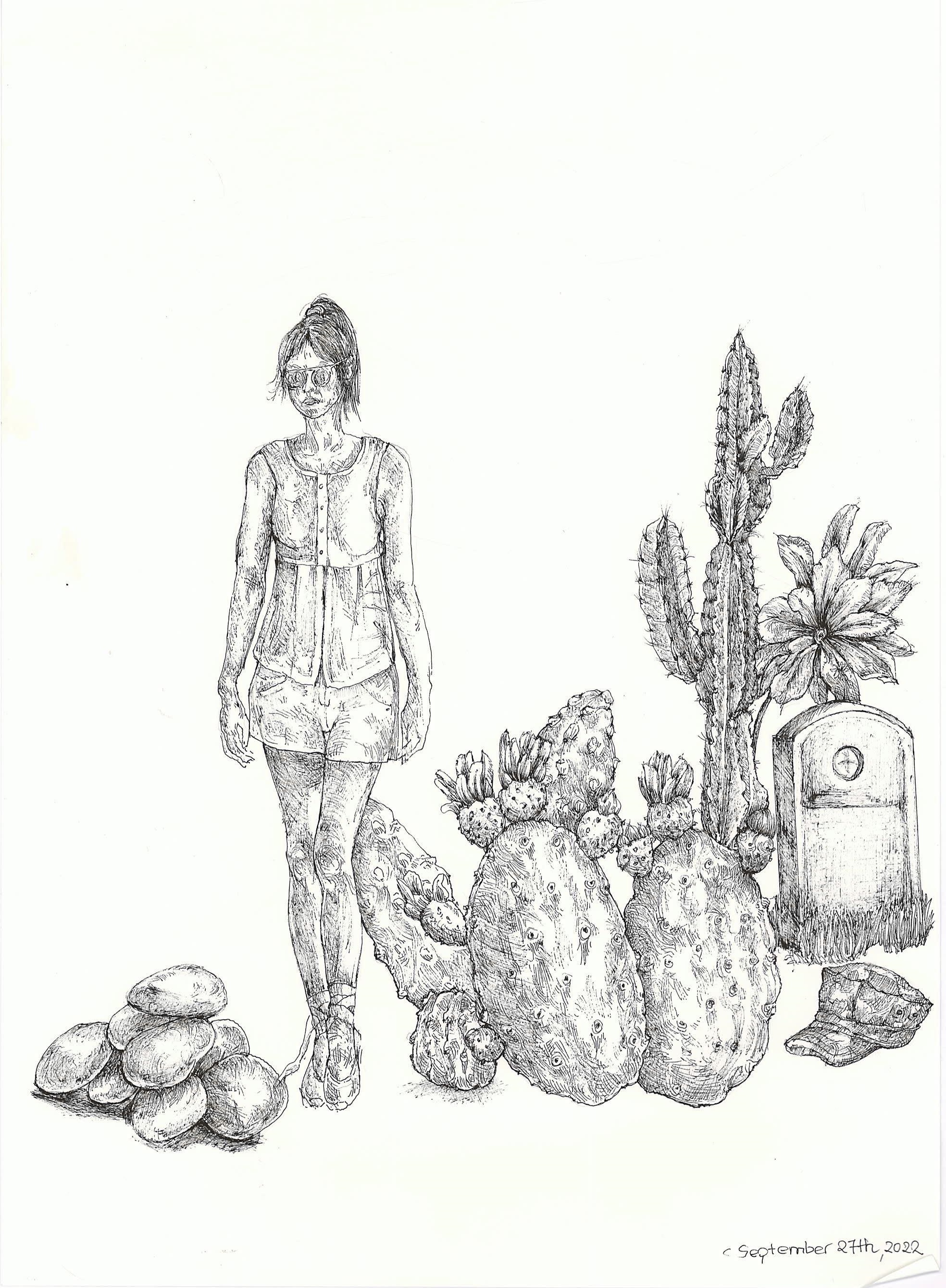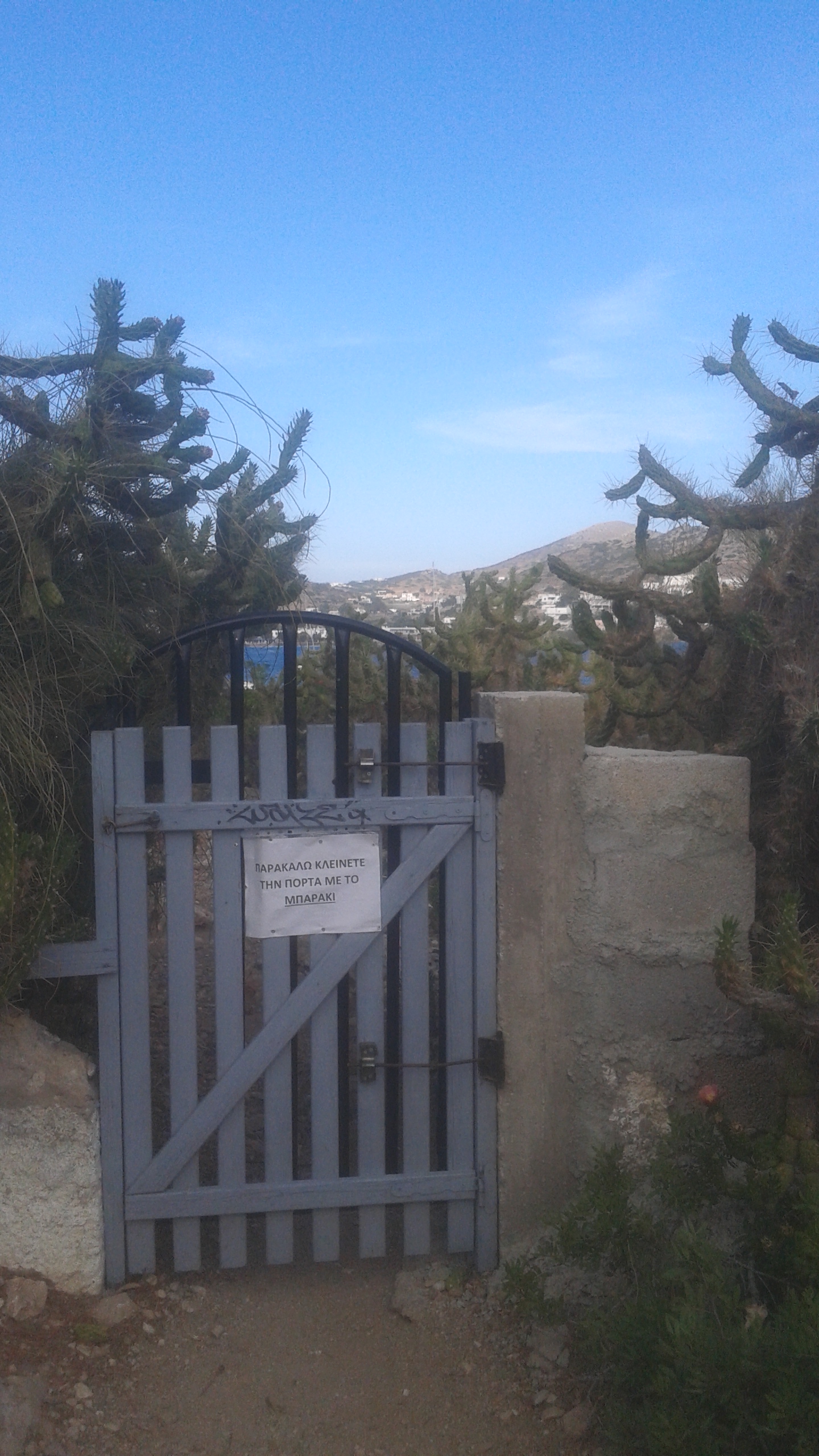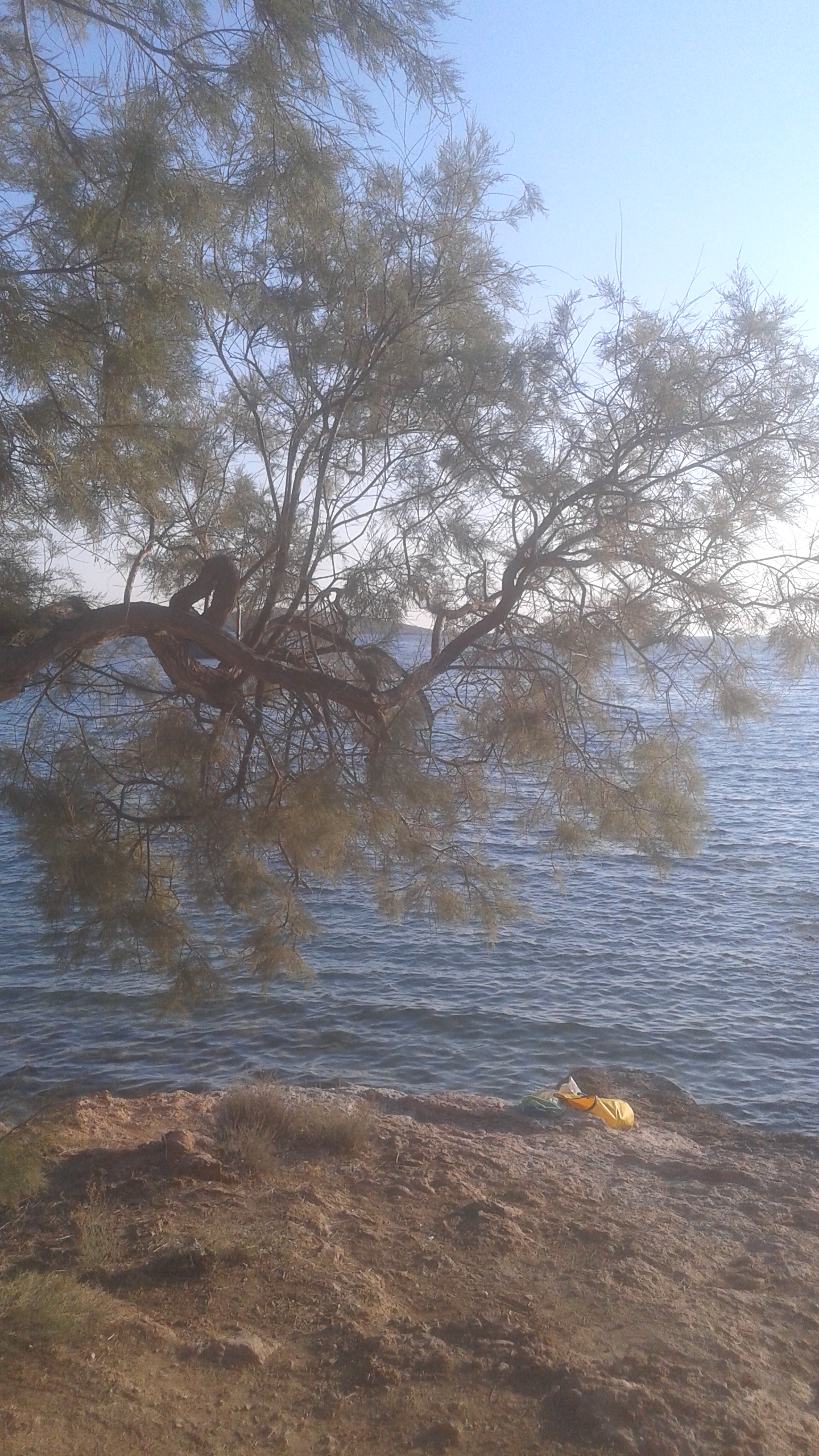A trauma conscious society and some art
Today’s post includes a few more drawings, a couple of poems, a few insights and ideas to perhaps ponder on from τhe Collective Trauma Summit that I jotted down while listening to talks. They are the gist of longer points, slightly paraphrased here. And finally, a reference to Gabor and Daniel Mate’s insights for the necessity of a trauma-informed society from their book, The Myth of Normal, which I’m slowly making my way through at the moment.
Drawings


Fences by Pam Mora

Mouths full of laughter, / the turistas (tourists) come to the tall hotel / with suitcases full of dollars.
Every morning my brother makes / the cool beach new for them. / With a wooden board he smoothes / away all footprints.
I peek through the cactus fence / and watch the women rub oil / sweeter than honey into their arms and legs / while their children jump waves / or sip drinks from long straws, / coconut white, mango yellow.
Once my little sister / ran barefoot across the hot sand / for a taste.
My mother roared like the ocean, / “No. No. It’s their beach. / It’s their beach.

Santiago by David Whyte
The road seen, then not seen, the hillside / hiding then revealing the way you should take, / the road dropping away from you as if leaving you / to walk on thin air, then catching you, holding you up, / when you thought you would fall, / and the way forward always in the end / the way that you followed, the way that carried you / into your future, that brought you to this place, / no matter that it sometimes took your promise from you, / no matter that it had to break your heart along the way…..
Insights from the Collective Trauma Summit
We have all been born in a traumatized world, which creates societal agreements, which creates social structures…. And all this has become normalized… we may not be aware of it or we may be resigned to it…
Forgiveness needs to look at power; we don’t want to reinscribe power or send the message that we don’t need to upend systems or structures…..
We co-regulate each other’s nervous systems / physiology… if you’re in a state of threat you can’t be a good regulator of anyone…. Often it’s our physiology that leads, not our good intentions….
The need for trauma informed media and journalism……. fear mongering journalism takes peoples’ voice away … As we scare each other we lose our wonderful capacity of our own humanity.
We need a trauma informed approach to the News. As consumers of media all this dark material can create a sense of gloom and hopelessness, and a society in constant state of fight – flight….. It’s important to give journalists space to report joyful and positive material….. to propagate the understanding and reframing of trauma….
A Trauma-Conscious Society
One theme running through the various talks of the summit is the need for a trauma conscious society. In his new book Gabor Mate also explores the importance of a trauma conscious society at large. Below are some extracts referring to many fields and contexts that have a broad impact on our lives, and where a trauma informed perspective could potentially change the quality of everyone’s experience. Mate writes: “The implications of a society being trauma-literate could be immense. Since trauma is the core dynamic undergirding so much ill health, we need to develop the eyes and ears to spot it to begin with.”
Extracts from the book:
“A trauma-informed medical system, for starters, could help heal and prevent suffering on a scale and in ways inspiring to envision. Such a system would revamp how health care is delivered, aligning itself with the latest scientific findings. Published almost every week in leading science journals, these findings have yet to make much of a dent in mainstream medical thinking….. At present there remains powerful resistance to trauma awareness on the part of the medical profession— albeit a resistance more subliminal than deliberate, more passive than active. In the dozens of interviews I conducted with medical colleagues for this book, including recent graduates, virtually none of them recalled being taught about the mind-body unity or the profusely documented relationship between, for example, trauma and mental illness or addictions— let alone the links between adversity and physical disease. We doctors pride ourselves on what we call evidence-based practice while ignoring vast swaths of evidence that call into question central tenets of our dogma.
Can we next imagine a trauma-informed legal apparatus, one that could earn its title of “correctional system”? Such a system would have to dedicate itself to actually correcting things in a humane way, a far cry from what we have now….. Despite the documented fact that a large number of prison inmates committed their crimes out of dynamics originating in severe childhood suffering, legal training leaves the average lawyer or judge even more woefully trauma-ignorant than their medical counterparts. True to its other customary name, morally speaking, ours is a criminal justice system. A trauma-informed legal system would not justify or excuse harmful behavior. Rather, it would replace nakedly punitive measures with programs designed to rehabilitate people and not to further traumatize them.
A trauma informed education…… because trauma affects kids’ ability to learn, a trauma-informed educational system would train teachers to be well versed in the science of development. Education in such a system would encourage an atmosphere where emotional intelligence is valued as highly as intellectual achievement. We would no longer evaluate kids based on performance goals that still mostly reflect and bestow social and racial advantage, but would provide settings where all were encouraged to thrive. “School programs could be designed to support healthy social and emotional development,” writes teacher and school psychologist Maggie Kline. “When students feel safe, the regions of the brain for language, thinking, and reasoning are enhanced.”
Beyond schooling, the potential implications of my friend Raffi Cavoukian’s vision of an entire society that honors the irreducible needs of children are both vast and simple. I leave it to you, the reader, to imagine what our world would look like if we placed young people’s well-being in the forefront. What would it mean for parenting and for support for parenting, for childcare and education, for the economy, for what products we sell and buy, for what foods we sell and prepare, for the climate, for the culture? What if our intention, as parents, as educators, as a society, was to raise children in touch with their feelings, authentically empowered to express them, to think independently and be prepared to act on behalf of their principles? A healthy society would also strive to close the largely artificial generation gap that makes it difficult for parents to relate to their kids and vice versa. As discussed in an earlier section on peer orientation, the natural human arrangement has a strong communal dimension, and the adult community is meant to work together to hold space for the development of the young. That does not mean lording it over our kids, nor dictating every aspect of their lives, only that we reclaim responsibility for creating and maintaining the container for their growth…..”
